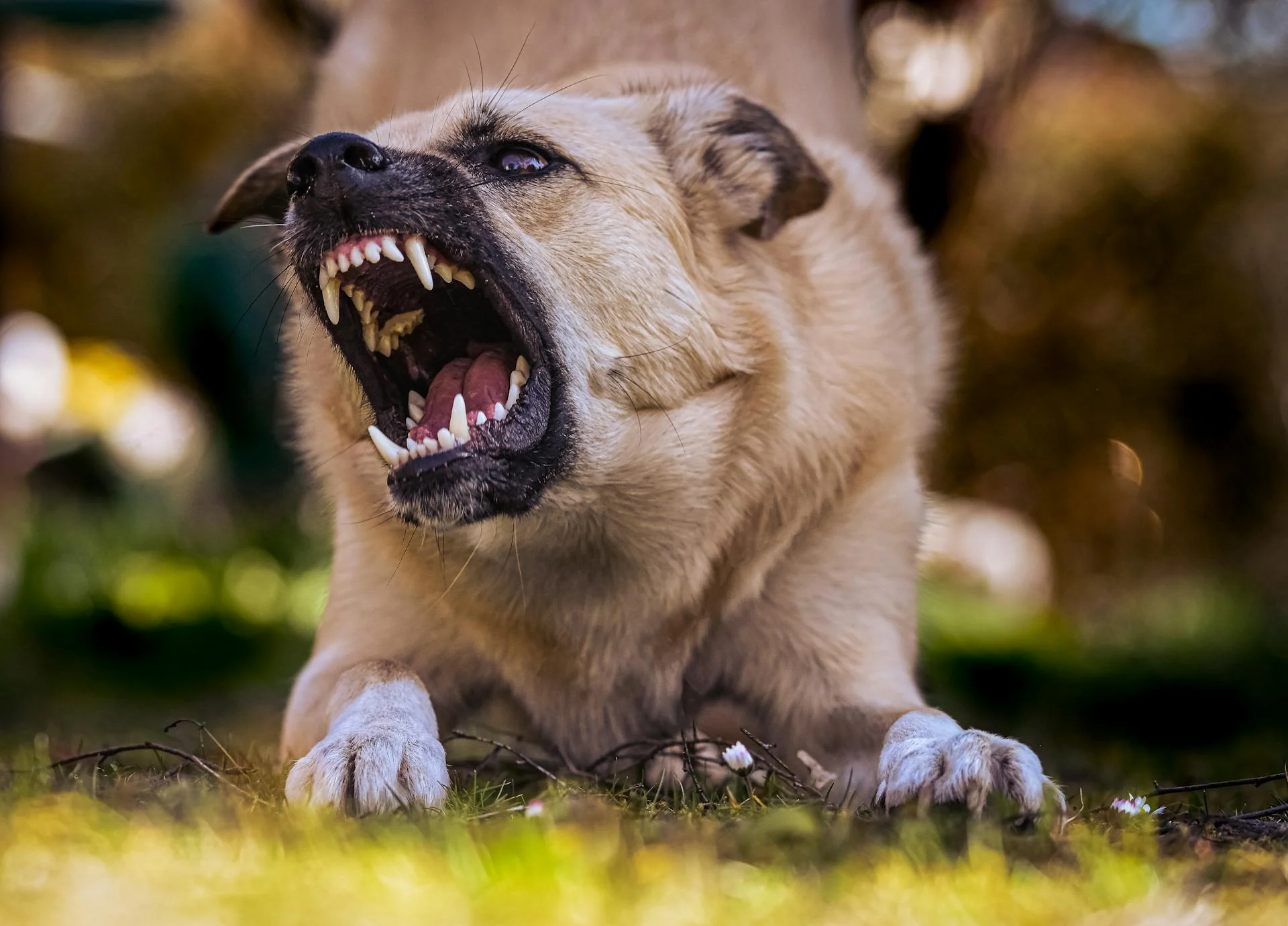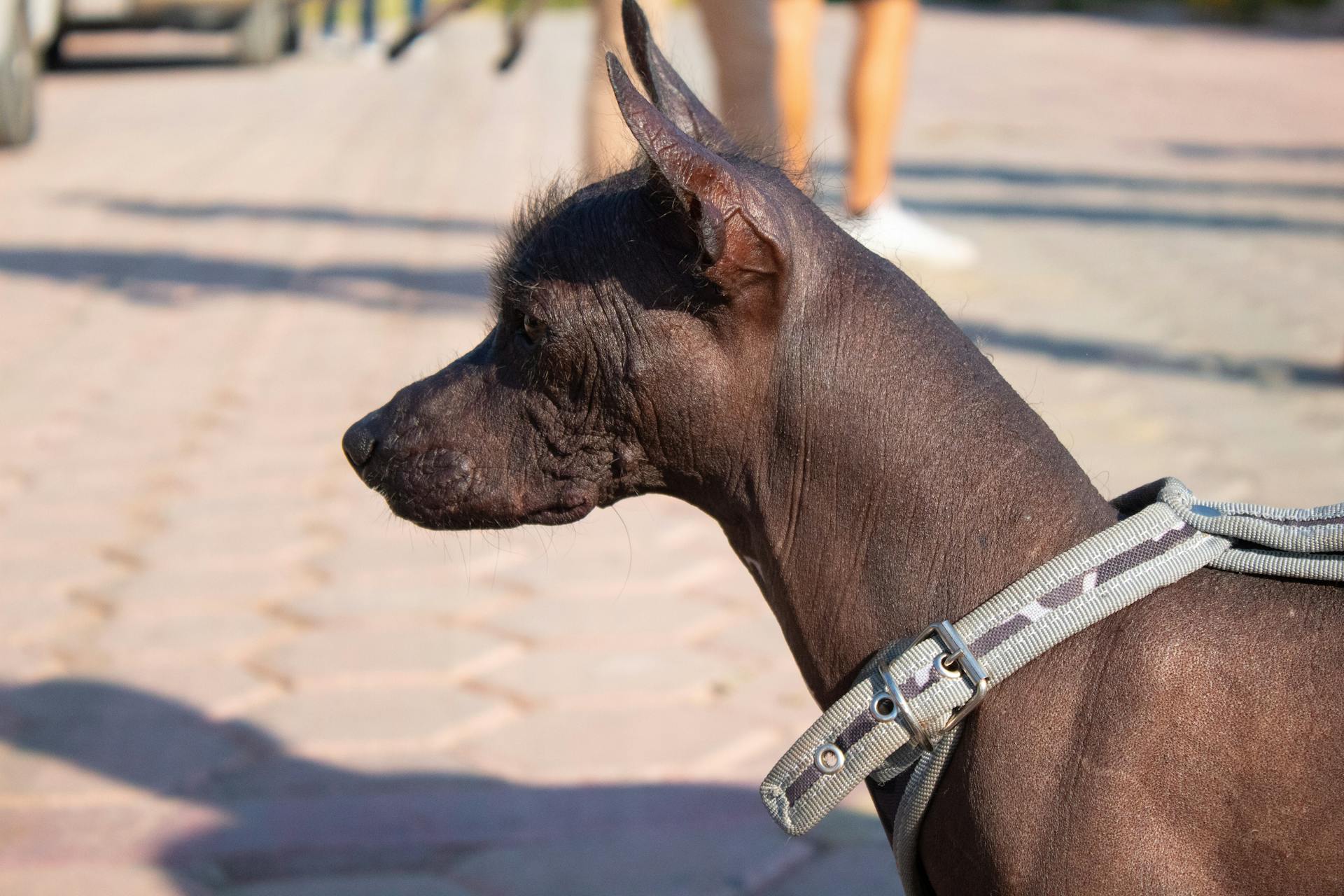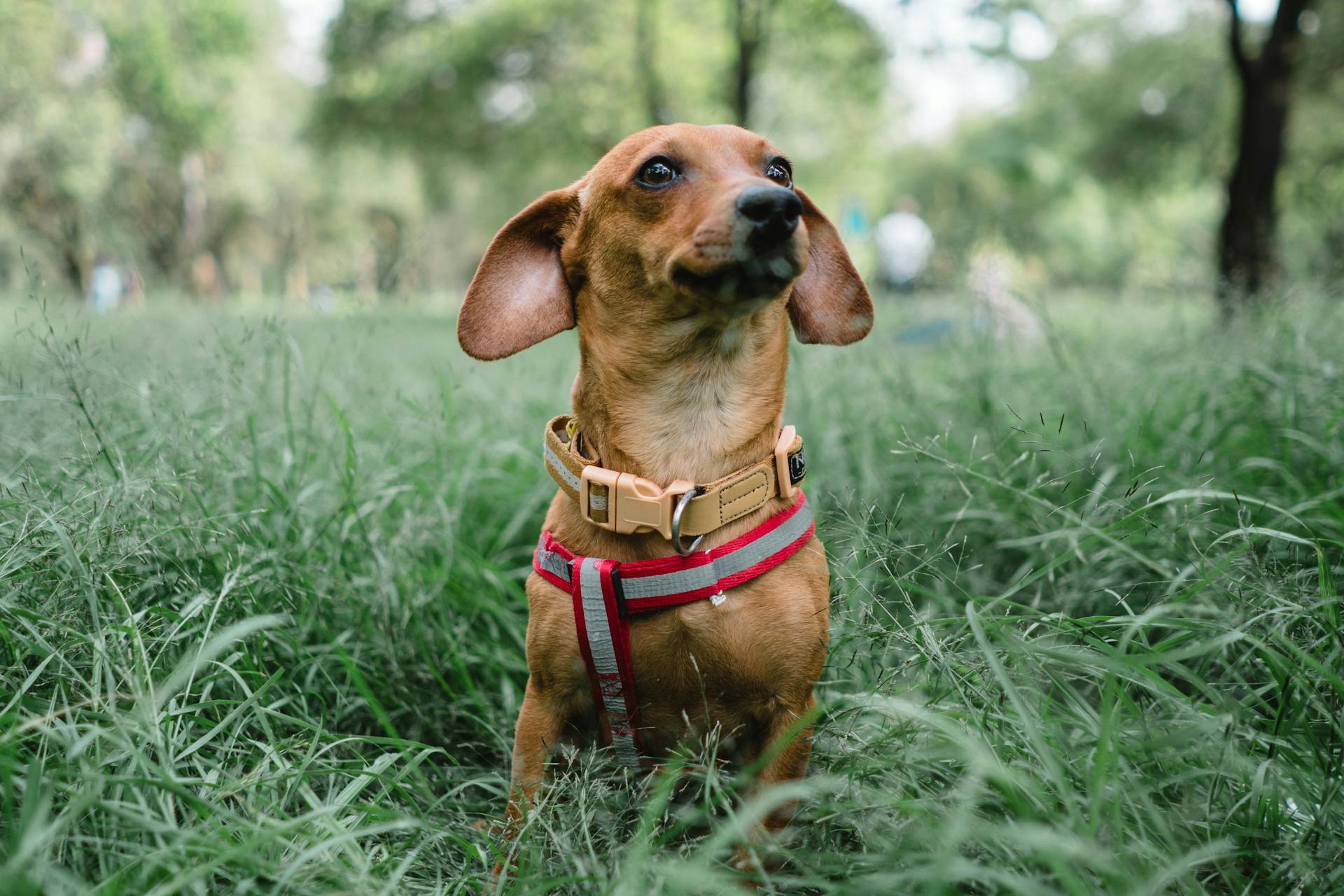
Dilated pupils in dogs can be a sign of aggression, but it's not always a straightforward indicator. A dog's pupil size can be influenced by various factors, such as lighting conditions, stress, and emotions.
In some cases, a dog's dilated pupils can be a sign of excitement or playfulness, rather than aggression.
A dog's breed can also play a role in determining their pupil size, with some breeds naturally having larger pupils than others.
If you notice your dog's pupils are dilated and they're exhibiting aggressive behavior, it's essential to take a step back and assess the situation.
Dog Body Language
Dog body language is a collection of unique methods that canines use to communicate their emotions and intentions. It's a compilation of sounds, physical body adjustments, and even touch.
Facial expressions, like a submissive grin, are a key component of a dog's body language and their form of communication. Pay attention to your dog's eyes or mouth movements.
A lowered head and crouching can indicate passive submission in dogs. This behavior can be seen in a variety of situations, like greeting other dogs or meeting new people.
Relaxed dogs will often roll over and show their tummy, indicating they're happy and content. You'll also notice a loose posture, floppy ears, and soft eyes.
A rigid pose, wide eyes, and ears pointed forward can be signs that your dog is alert and on guard. This behavior is usually triggered by a noise or something that catches their attention.
Dilated pupils can be a sign of aggression in dogs, but it's not the only indicator. Other signs of aggression include flattened ears, a stiff tail, wide eyes, and dilated pupils.
Understanding Pupil Dilation
Pupil dilation is a common phenomenon in dogs, where the pupils become larger to allow more light to enter the eye. This is controlled by muscles in the eye, responding to light levels and other signals from the dog's brain.
Imagine the pupil like a camera aperture: it changes size to control how much light enters the eye. In dim or dark environments, the pupils get bigger to help the dog see better.
The size of a dog's pupils can also change due to their emotions or health. For example, if a dog is excited, scared, or aggressive, their pupils might dilate as part of their body's "ready" response.
Here are some reasons why a dog's pupils might dilate:
- Dilated pupils can be a sign of alarm or fear.
- Dilated pupils can also signify excitement.
- Certain medical conditions or medications can cause the pupils to dilate.
If your dog's pupils are dilated, it's essential to understand the underlying reason. If it's due to excitement or play, it's likely nothing to worry about. However, if it's a sign of fear or anxiety, you may want to investigate the cause and take steps to address it.
In some cases, a dog's pupils might dilate due to their emotions, such as being tense or afraid. If this is the case, their eyes might also become rounder, and you may notice the white portion of their eyeball, or the sclera, is visible.
Causes of Aggression
Dilated pupils in dogs can be a sign of aggression, but what triggers this behavior?
Pain or discomfort is a common cause of aggression in dogs, as seen in the case of a dog with a painful ear infection.
Stress and anxiety can also lead to aggression, especially in dogs that are not well-socialized or have a history of trauma.
A lack of proper training and socialization can contribute to aggression in dogs, as it can lead to fear and defensiveness.
Dogs with a history of abuse or neglect are more likely to develop aggression due to the trauma they have experienced.
Dogs in pain or discomfort may also become more aggressive as a coping mechanism, trying to protect themselves from further harm.
Growling
Growling is a crucial form of communication in dogs, and it's essential to understand the different types of growls and their meanings. A harmless growl during play is usually higher-pitched and indicates fun and engagement. However, aggressive growling is lower-pitched and accompanied by long and low rumbles, which can be a warning sign for an incoming bite.
Aggressive growling can occur due to power or territorial behavior, or if a dog is feeling possessive over a toy or bone. It's essential to discourage aggressive growling, as it can escalate into a bite.
Frustrated dog growling is a different scenario, often caused by a dog's inability to reach its toy or being anxious to greet its owner. This type of growling is usually harmless and will subside relatively quickly.
Here are some key differences between the types of growls:
Drugs & Toxicosis
Certain medications can cause pupil dilation in dogs, which may be a sign of an underlying issue. Antidepressants, antihistamines, anti-nausea medications, and anti-seizure medications are some common culprits.
Marijuana poisoning is another potential cause of dilated pupils in dogs. THC, the active ingredient in marijuana, can cause this effect.
Topical eye medications can also cause pupil dilation. These medications, such as those containing tropicamide, atropine sulfate, and phenylephrine hydrochloride, can lead to both pupil dilation and changes in intraocular pressure.
If you suspect that your dog's dilated pupils are due to drug or medication use, it's essential to consult with your veterinarian immediately.
16. Pain
Dilated pupils can be a sign of pain in dogs, but it's not the only indicator.
Pain can cause a dog to exhibit behaviors such as whining or whimpering, limping or favoring a limb, decreased appetite, restlessness or agitation, panting or rapid breathing, and guarding or protecting a certain area of the body.
If a dog is showing signs of pain, it's essential to seek veterinary attention as soon as possible.
Dogs in pain may also show a decrease in their usual activities or seem less interested in their surroundings.
Some common signs of pain in dogs include:
- Whining or whimpering;
- Limping or favoring a limb;
- Decreased appetite;
- Restlessness or agitation;
- Panting or rapid breathing; and
- Guarding or protecting a certain area of the body.
Pain can be an indication of a serious underlying condition, and delaying treatment can lead to further complications and discomfort for the dog.
Diagnosis and Prevention
If your dog's dilated pupils are accompanied by aggression, it's essential to identify the underlying cause.
A dog's pupils dilating can be a sign of excitement, stress, or even pain, but in some cases, it can be a precursor to aggression.
Dogs with a history of trauma or abuse may exhibit dilated pupils as a defensive mechanism.
In some breeds, such as the Chow Chow and the Shar-Pei, dilated pupils can be a normal response to excitement or stress.
If you suspect your dog's dilated pupils are related to aggression, consult a veterinarian or a certified animal behaviorist for professional guidance.
Dogs that are not socialized properly may develop aggression issues, including dilated pupils.
Consistent training and socialization can help prevent aggression in dogs.
Early detection and intervention can make a significant difference in preventing aggression issues in dogs.
If you notice your dog's dilated pupils in conjunction with growling, snapping, or other aggressive behaviors, take immediate action to address the issue.
Additional reading: Chow Dog Breed Aggression
Dog Behaviors
Dilated pupils can be a sign of aggression in dogs, but it's not the only one. A rigid pose, wide eyes, and ears pointed forward are all signs that your dog is alert and on guard.
Dogs that are alert and on guard may also exhibit a stiff tail. This is a common behavior in dogs that have heard a noise or detected something of interest.
If your dog is feeling aggressive, they may also display flattened ears. This is a subtle sign of aggression that can be easy to miss.
Dilated pupils are a clear sign of aggression, but it's also essential to watch for other behaviors like a stiff tail and flattened ears. If you notice any of these signs, it's best to give your dog plenty of space.
Some dogs may respond to fear with aggression, which can be a sign of underlying anxiety. If you notice your dog is exhibiting fearful behavior, such as tucking their tail between their legs, it's essential to seek professional help from a veterinarian.
Dilated pupils can be a sign of aggression, but it's not the only sign. A loose posture, floppy ears, and soft eyes are all signs of a relaxed dog.
Frequently Asked Questions
What does rage syndrome in dogs look like?
Rage syndrome in dogs is characterized by intense, unpredictable outbursts of aggression, often triggered by seemingly minor situations. These episodes can escalate rapidly, causing dogs to freeze, stare, and potentially bite.
What do dilated pupils mean in dogs?
Dilated pupils in dogs can be a sign of stress, fear, or excitement. If you notice this change in your dog's eyes, it may indicate an underlying emotional state that needs attention.
Sources
- https://www.diggs.pet/blog/pet-parenting/dog-body-language/
- https://pawsafe.com/blogs/dog-healthcare/dogs-pupils-are-dilated
- https://www.joyelawfirm.com/blog/warning-signs-a-dog-may-bite/
- https://zumvet.com/blog/7-things-you-need-to-be-wary-about-when-your-dog-shows-the-side-eye/
- https://petdesk.com/blog/body-language-in-cats-dogs/
Featured Images: pexels.com


